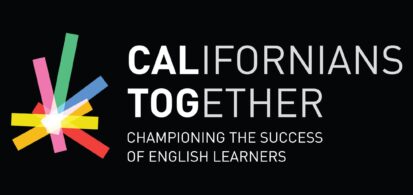In the 2025-26 school year, all schools will be required to administer annually to every K-2 student a screener for reading difficulties. A panel has been working all year to develop criteria for determining which screeners will be approved for districts to implement. We have been monitoring the process to uplift issues that need to be addressed when screening English learners.
At the November 18, 2024 meeting of the panel, two of our ELLLI advocates, Anna Hubert and Wendy Masestas-Padilla, and Californians Together Strategic Advisor Shelly Spiegel Coleman provided testimony to the full committee to raise a number of concerns about how English learners are assessed for reading difficulties.
Wendy Maestas-Padilla
Good afternoon, my name is Wendy Maestas-Padilla and I am here with Californians Together to express concern about the use of rapid picture-naming tests in eleven of the screeners to assess students, especially English learners, who may struggle with vocabulary recall under pressure. From my 24 years of teaching experience, I have found that naming pictures in English can be a uniquely difficult task that doesn’t necessarily reflect a student’s overall language skills or academic potential.
This type of rapid recall test places unnecessary pressure on students and prioritizes speed over meaningful comprehension. For English learners in particular, it risks labeling them incorrectly due to factors like vocabulary gaps or anxiety, rather that accurately measuring their abilities.
I encourage the board to consider assessments that account for students’ diverse learning styles and provide a fuller picture of their progress. Rather than perhaps risking the over-identification of students with reading difficulties, our goal should be to empower students—not to discourage them with narrow, high-pressure tests.
Thank you for your time and for prioritizing thoughtful solutions for all students.
Anna Hubert
Good afternoon, my name is Anna Hubert, and I am here today representing Californians Together to advocate for screeners in languages other than English.
English learners with Spanish as their home language should be given the opportunity to have screeners administered in both Spanish and English. By combining the results of both, educators can accurately identify the strengths that English learners bring to the language process. This acknowledges that bilingualism is an asset and not a deficit.
We also need to be mindful of our diverse student population—which includes speakers of many other languages. Screeners should aim to be inclusive of all students.
Had there been a system when I entered school which screened both my languages, my journey in education would have began in a more positive way. A dual-language approach can ensure that students are recognized for what they know, rather than penalized for not mastering English.
Thank you for your time and consideration and I am hopeful that we can move toward a more equitable and inclusive approach.
Shelly Spiegel Coleman
We continue to urge the panel to include sufficient English language proficiency in the bare minimum criteria. Upon review of the screener overviews, 6 out of the 13 do not address this issue, and 4 provide minimal guidance on administration protocols. A screener that does not present data on administration to English learners by proficiency levels, prevents our youngest English learners the ability to show what they know and can do. This issue effects the validity of several of the elements being screened such as rapid automatized naming, language and reading comprehension. The majority of English learners will be screened only in English without evidence that the screeners are valid and reliable by English proficiency levels and could lead to misidentification.
We request that you add sufficient English Language Proficiency to the bare minimum criteria,
